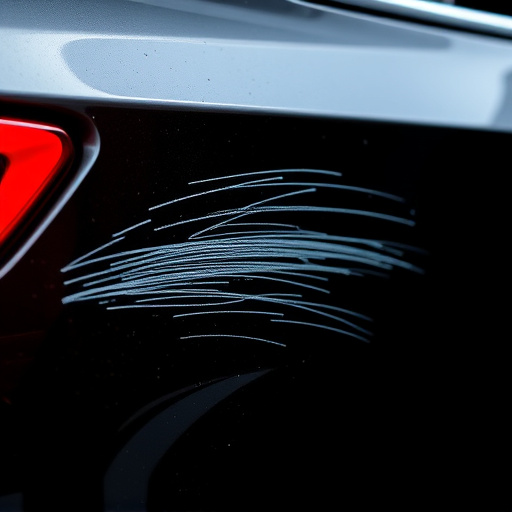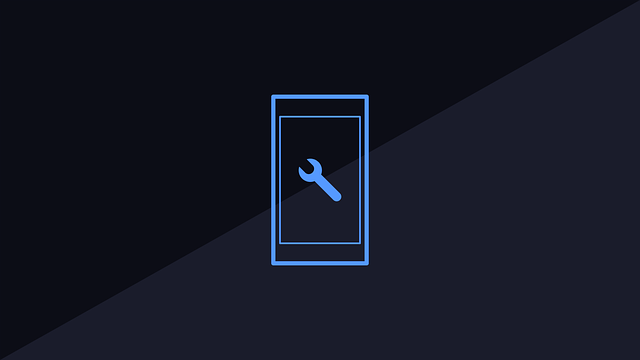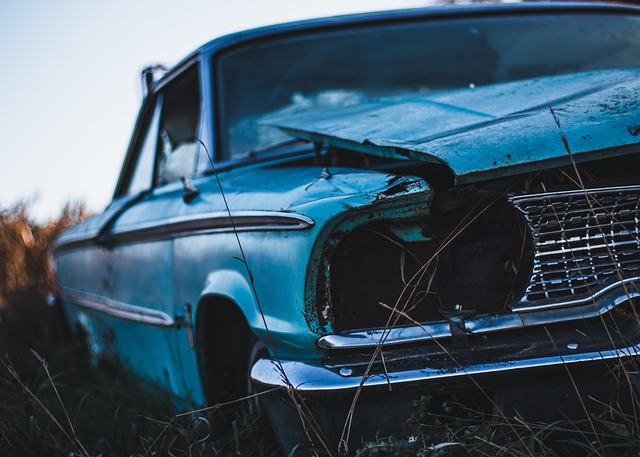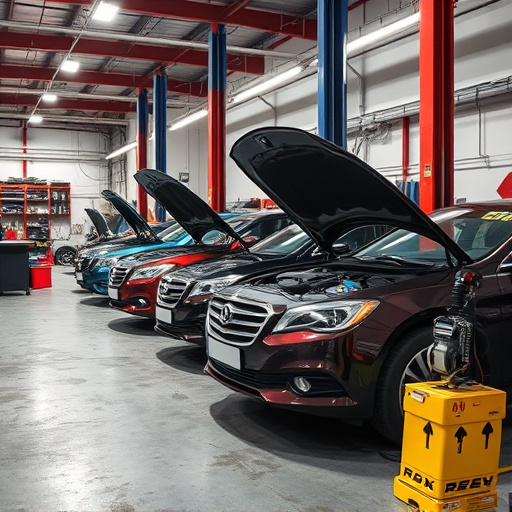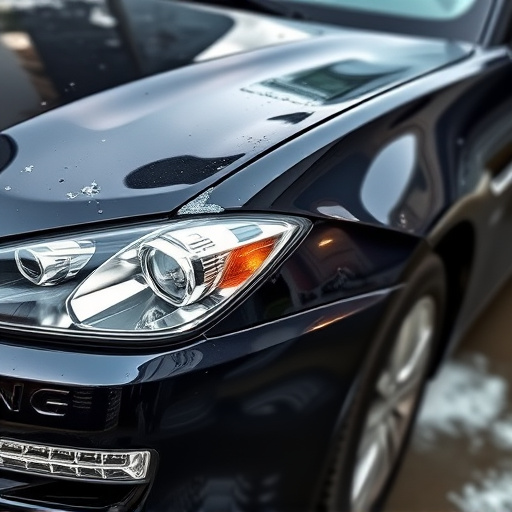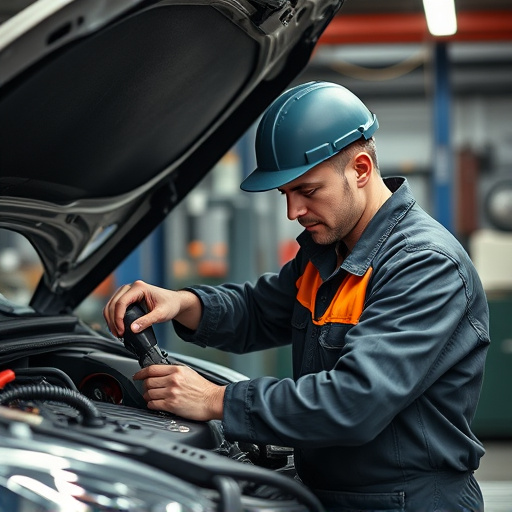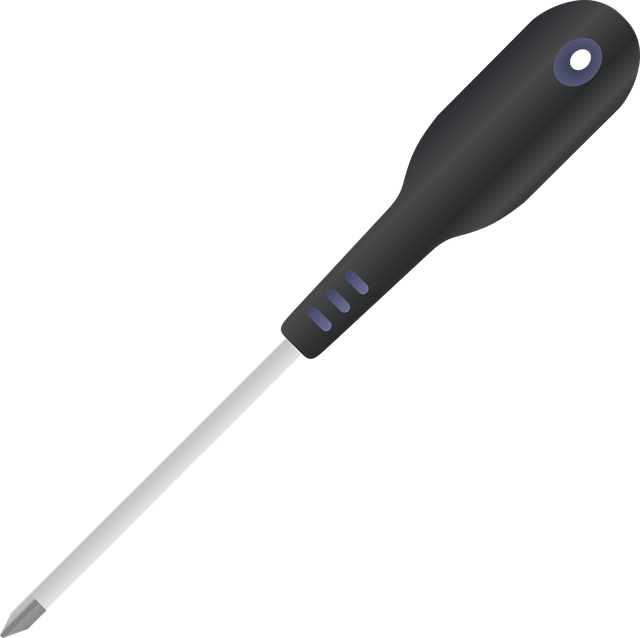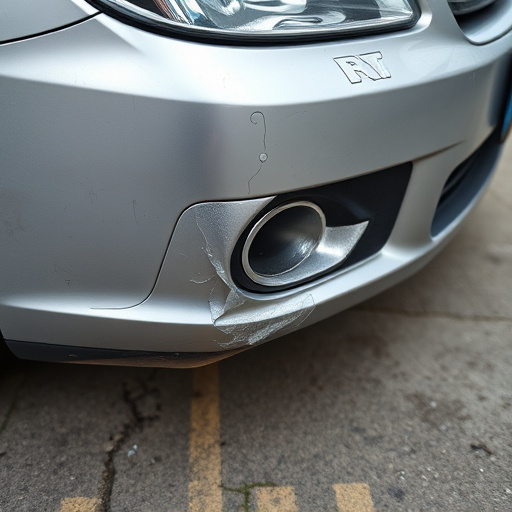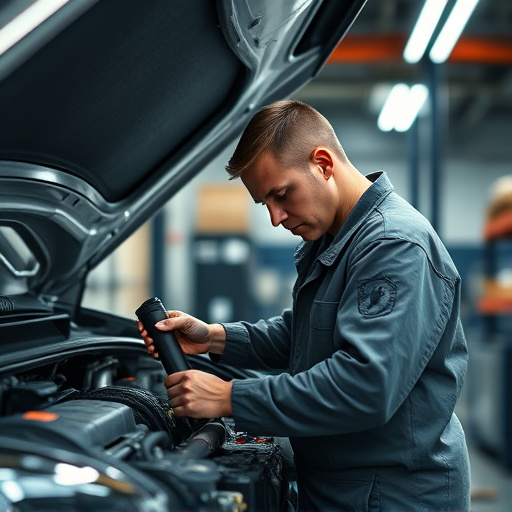Auto body panel replacement begins with a thorough vehicle damage assessment and precise measurement using tools like measuring tapes and digital scanners. Skilled technicians source OEM, replica, or aftermarket panels for compatibility and prepare them through cleaning, rust prevention, and priming. Success relies on three key steps: installation, fitting, and final inspection, ensuring structural integrity, aesthetics, and customer satisfaction, especially in hail damage or collision repairs.
“In the realm of auto body panel replacement, a well-managed timeline is key to efficient job completion. This comprehensive guide outlines the critical steps involved, from initial damage assessment and precise measuring to sourcing high-quality replacement panels and meticulous installation.
We’ll explore best practices for each phase, ensuring a structured process that reduces downtime and delivers superior results in auto body repair. Discover the importance of accurate measurements, efficient preparation, and thorough inspection for seamless panel fitting.”
- Assessing Damage and Measuring Parts
- Sourcing and Preparing Replacement Panels
- Installation, Fitting, and Final Inspection
Assessing Damage and Measuring Parts
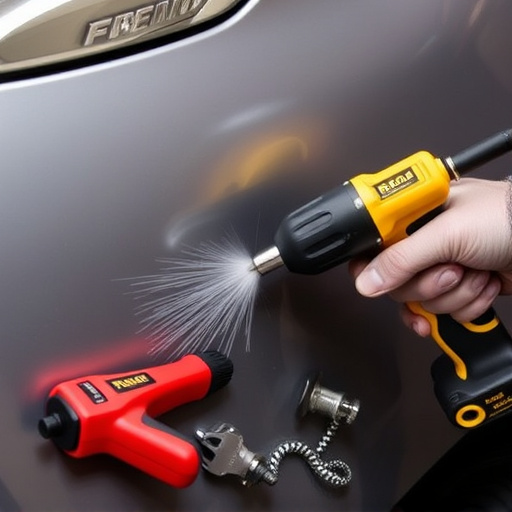
When undertaking an auto body panel replacement, the initial steps are paramount to ensuring precision and efficiency throughout the job. The process begins with a thorough assessment of the damage sustained by the vehicle. This involves closely examining the affected area for dents, crumple, or any other deformities that need attention. Skilled technicians use specialized tools to detect even the subtlest imperfections, as these could impact the overall alignment and fit of the replacement parts.
Accurate measurement is another critical aspect. Taking precise dimensions ensures the new panels will perfectly match the original specifications. This involves using measuring tapes and digital scanners to capture exact sizes and shapes. These measurements guide the cutting and forming processes, ensuring the new auto body panels seamlessly integrate into the vehicle’s structure. It’s a meticulous process that requires experience and attention to detail, especially when dealing with complex car dent removal and intricate auto body repairs.
Sourcing and Preparing Replacement Panels
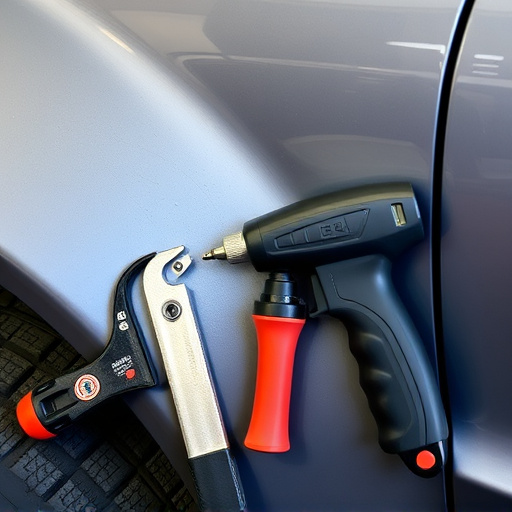
When undertaking an auto body panel replacement, sourcing and preparing the right panels is a meticulous process. It begins with identifying the specific make, model, and year of the vehicle to ensure compatibility. Reputable autocar parts suppliers offer a wide range of options, including original equipment manufacturer (OEM) panels and high-quality aftermarkets alternatives. The former are exact replicas of the factory panels, while the latter provide cost-effective solutions without compromising on durability.
Before installing any replacement panel, thorough preparation is crucial. This involves inspecting the damaged area for debris and ensuring it’s clean and free from contaminants. Rust prevention is another critical step, often involving sandblasting or using specialized rust converter coatings. Priming the surface helps achieve a smooth finish when painting, which is essential for long-lasting autobody repairs and to prevent future car damage repair issues.
Installation, Fitting, and Final Inspection
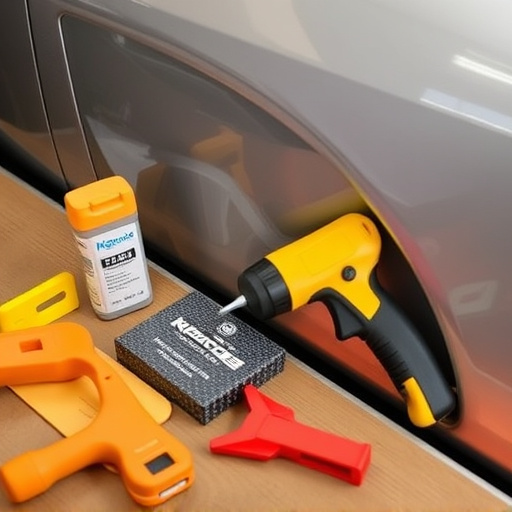
The successful completion of an auto body panel replacement job hinges on three critical steps: Installation, Fitting, and Final Inspection. During installation, the new panel is precisely aligned and secured to ensure a seamless fit. Skilled technicians use specialized tools and techniques to achieve this, minimizing any gaps or misalignments that could compromise structural integrity and aesthetic appeal. Once installed, fitting involves verifying the panel’s alignment with the vehicle’s overall design, ensuring it integrates harmoniously without compromising the car’s aerodynamics.
In the final inspection phase, meticulous checks are conducted to ascertain the quality of the replacement. This includes examining the paint job for evenness and clarity, checking for any signs of misalignment or gaps, and verifying that all hardware is securely fastened. A thorough final inspection not only guarantees a high-quality repair but also plays a pivotal role in ensuring customer satisfaction. For example, in cases involving hail damage repair or vehicle collision repair, meticulous fitting and inspection are crucial to restoring the vehicle to its pre-collision condition, providing clients with peace of mind on the road.
Auto body panel replacement is a meticulous process that involves careful assessment, precise measurement, efficient sourcing, and expert installation. From assessing damage and measuring parts to ensuring proper fitting during installation, each step plays a crucial role in achieving a high-quality repair. By adhering to the outlined timeline and best practices, auto body shops can provide customers with reliable and long-lasting auto body panel replacement solutions.
